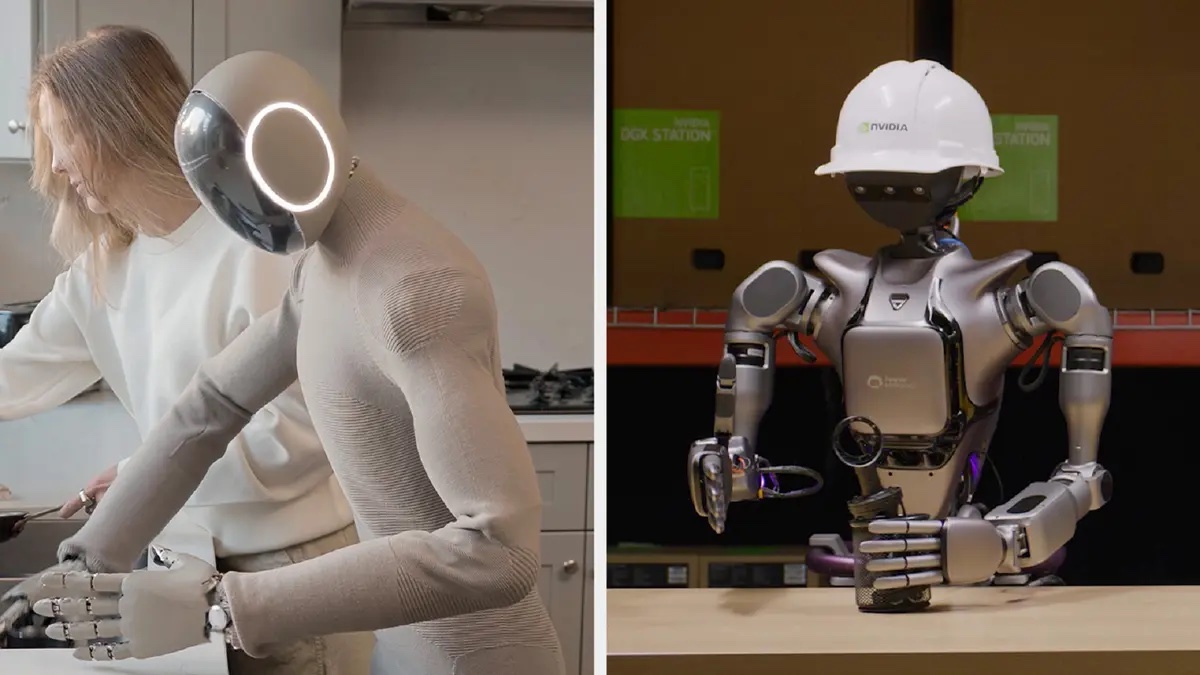At its GTC conference, NVIDIA made a series of groundbreaking announcements, unveiling a suite of AI-driven technologies designed to revolutionize industries from robotics to healthcare. Among the key innovations revealed was Isaac GR00T N1, the world’s first fully customizable foundation model for humanoid reasoning and skills. Alongside this, NVIDIA introduced Isaac GR00T Blueprint for synthetic data generation, and Newton, a physics engine developed in collaboration with Google DeepMind and Disney Research.
These advancements mark a significant leap in NVIDIA’s mission to bridge the gap between AI and the physical world, offering new possibilities for developers and industries alike. One of the most highly anticipated innovations, Isaac GR00T N1, is the first of a series of pre-trained, customizable models designed for robotics developers. This revolutionary model aims to address the growing global labor shortage, which exceeds 50 million workers, by enhancing robotic capabilities in industries worldwide.
The Isaac GR00T N1 model features a dual-system architecture inspired by human cognition. System 1 acts as a rapid-response mechanism for executing instinctive actions, while System 2 processes and analyzes its environment before translating these insights into precise movements. This synergy allows the robot to generalize across tasks such as grasping, manipulating, and transferring objects with remarkable accuracy.
In a live demonstration during his GTC keynote, NVIDIA CEO Jensen Huang showcased 1X Technologies’ humanoid robot, powered by Isaac GR00T N1, autonomously performing household tidying tasks with impressive efficiency. “The age of generalist robotics is here,” Huang declared, highlighting the potential for this technology to open new frontiers in AI-driven robotics.
NVIDIA has already partnered with leading robotics companies such as 1X Technologies, Agility Robotics, Boston Dynamics, Mentee Robotics, and NEURA Robotics, which have gained early access to the GR00T N1 model.
Further pushing the boundaries of robotics, NVIDIA also unveiled Newton, a cutting-edge physics engine developed in partnership with Google DeepMind and Disney Research. Built on NVIDIA’s Warp framework, Newton is optimized for robot learning and compatible with simulation platforms like Google DeepMind’s MuJoCo and NVIDIA Isaac Lab. The collaboration with Disney Research aims to enhance robotic characters, such as the expressive droids from Star Wars, by incorporating Newton’s physics engine to create more engaging and dynamic entertainment robots.
In addition to advancements in robotics, NVIDIA introduced Cosmos World Foundation Models (WFMs), which give developers unprecedented control over AI-driven world generation and reasoning. This includes two new tools, Cosmos Transfer and Cosmos Predict, that offer a more efficient approach to AI training and autonomous decision-making.
- Cosmos Transfer converts structured video inputs, such as segmentation maps and LiDAR scans, into realistic synthetic data to improve the accuracy of AI models.
- Cosmos Predict takes world generation a step further, predicting motion and actions from images, text, and video to help robots and self-driving cars make better decisions in real-world environments.
On the healthcare front, NVIDIA announced a collaboration with GE HealthCare to revolutionize autonomous medical imaging. Isaac for Healthcare, a new medical device simulation platform, will use AI-driven models and physics-based simulations to assist in areas like robotic-assisted surgeries, endoscopy, and cardiovascular interventions. The platform aims to expand access to medical care globally by addressing the significant shortage of healthcare professionals and enabling medical devices to act autonomously.
Kimberly Powell, VP of Healthcare at NVIDIA, noted, “The healthcare industry is one of the most important applications of AI. With Isaac for Healthcare, we’re enabling lifesaving medical devices to act autonomously and expand access to healthcare worldwide.” Early adopters such as Moon Surgical, Neptune Medical, and Xcath are already exploring the platform’s capabilities.
NVIDIA also revealed the DGX Spark, a personal AI supercomputer designed to extend the capabilities of GR00T N1 for new robots, tasks, and environments without the need for extensive custom programming. The training data for GR00T N1, as well as task evaluation scenarios, can now be downloaded from Hugging Face and GitHub.
Isaac GR00T Blueprint, designed for synthetic manipulation motion generation, is available as an interactive demo on build.nvidia.com or can be downloaded from GitHub. The Cosmos WFMs are now listed in the NVIDIA API catalogand Google Cloud’s Vertex AI Model Garden, with Cosmos Predict and Cosmos Transfer also available on Hugging Face and GitHub. Cosmos Reason is in early access, while the Newton physics engine is expected to launch later this year.
These announcements highlight NVIDIA’s leadership in AI innovation, with transformative potential across multiple industries. The company’s continued collaboration with key players in robotics, entertainment, healthcare, and AI is poised to push the boundaries of what’s possible, making this an exciting time for developers and innovators worldwide.
By Impact Lab


